Ancient Villages
Ancient Villages in Yunnan
Daoyipang Fishing Village (岛依旁村) is part of the Dajianpang Administrative Village (大建旁行政村) in Shuanglang Town (双廊镇), Dali City (大理市), Yunnan Province (云南省). Located in the basin area, it lies south of the town, 0.5 kilometers from the village committee and 1.5 kilometers from Shuanglang Town, at an elevation of 1,975 meters. The village has an average annual temperature of 15°C and receives about 1,080 millimeters of precipitation per year. The village primarily relies on fishing for income, lacking agricultural land.
Daoyipang Fishing Village is situated opposite Nanzhao Style Island (南诏风情岛), with a lively atmosphere despite its smaller sea view compared to Dajianpang. The village has preserved its traditional charm without succumbing to commercialization, making it a tranquil and picturesque destination. In the evenings, the absence of streetlights contributes to its peaceful ambiance, with several barbecue stalls available for visitors to enjoy grilled food by the seaside.
Daoyipang Fishing Village sits at an altitude of approximately 1,975 meters, offering stunning views of the surrounding landscape. The village’s accommodations feature unique lodgings, primarily brick and wooden structures. It neighbors the national 4A scenic spot, Nanzhao Style Island, known for its beautiful natural scenery.
The region experiences a low-latitude highland monsoon climate, making it suitable for year-round visits. Spring features moderate temperatures and enchanting scenery; summer is perfect for escaping the heat; autumn showcases clear blue skies and less rainfall; and winter provides cozy sunshine that enhances the pleasant atmosphere.
It is recommended to spend a day exploring Daoyipang Fishing Village to fully appreciate its beauty and tranquility.
According to available data, the village has 60 households, with a total population of 193, including 113 males and 81 females. The labor force consists of 120 individuals, predominantly from the Bai ethnic group (白族). Healthcare is primarily provided by a village clinic located 0.5 kilometers from the village committee and a town hospital 1.5 kilometers away. The village has two designated garbage collection sites.
Daoyipang Fishing Village is located between Nanzhao Style Island and Dajianpang Village, adjacent to Erhai Lake (洱海). It serves as an excellent spot for watching sunsets while retaining its traditional fishing village charm.
For specific details about admission fees, please consult the scenic area management.
The village is open all day for visitors.
Daoyipang Fishing Village offers a serene retreat with its stunning views, traditional culture, and warm hospitality, making it an inviting destination for travelers seeking peace and natural beauty.
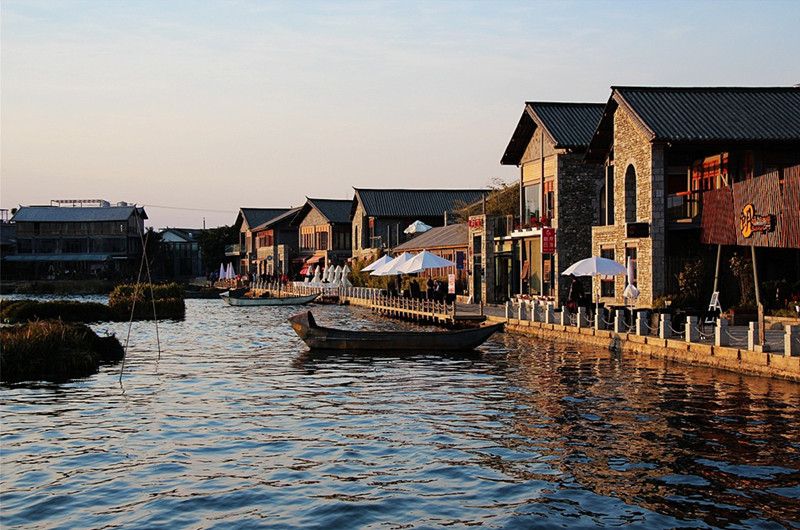
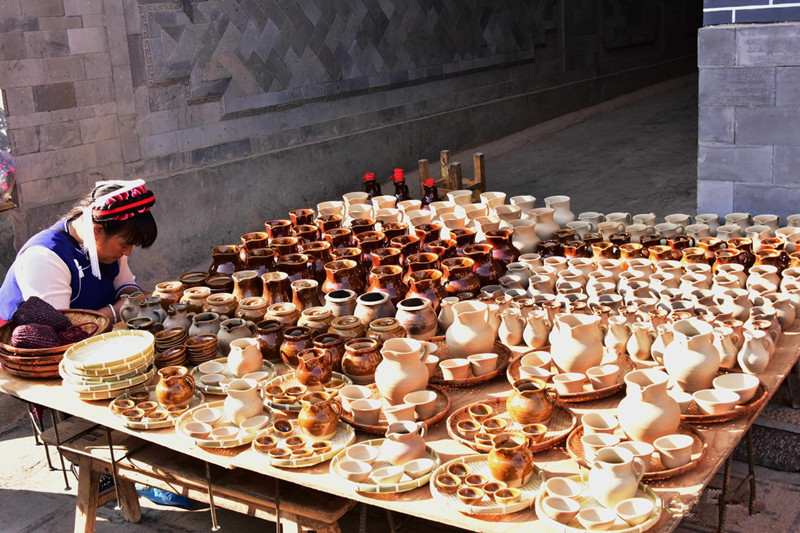
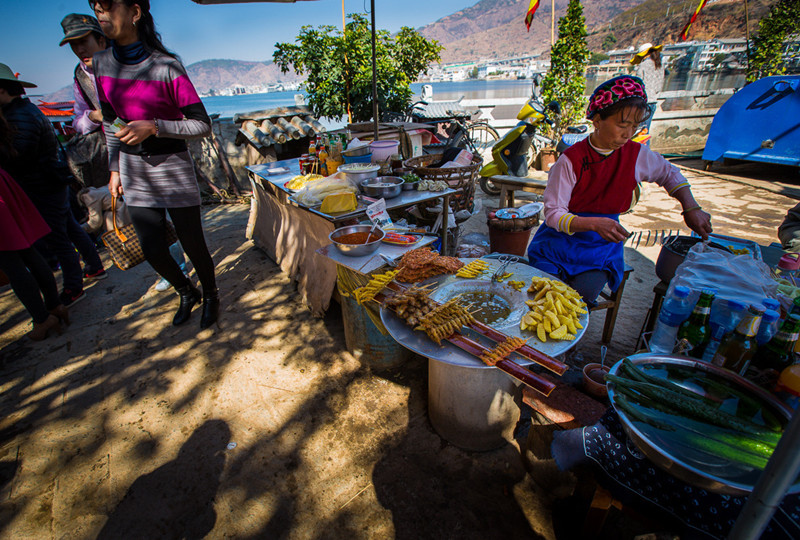
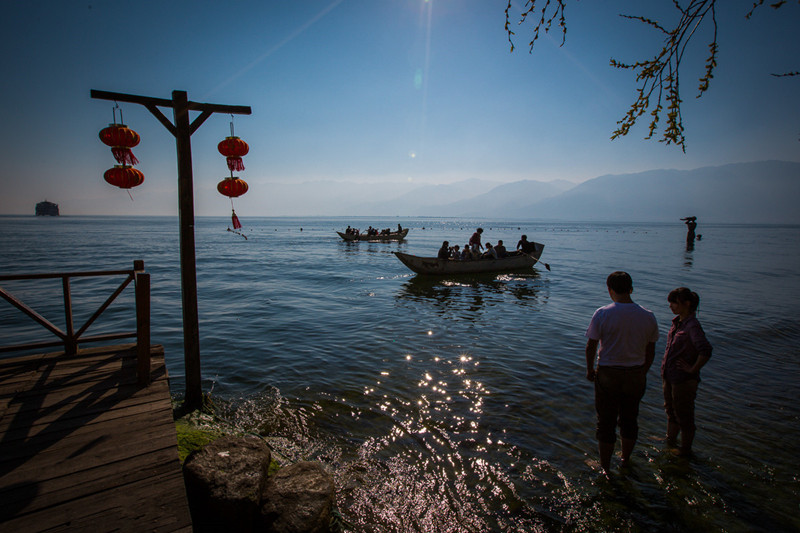
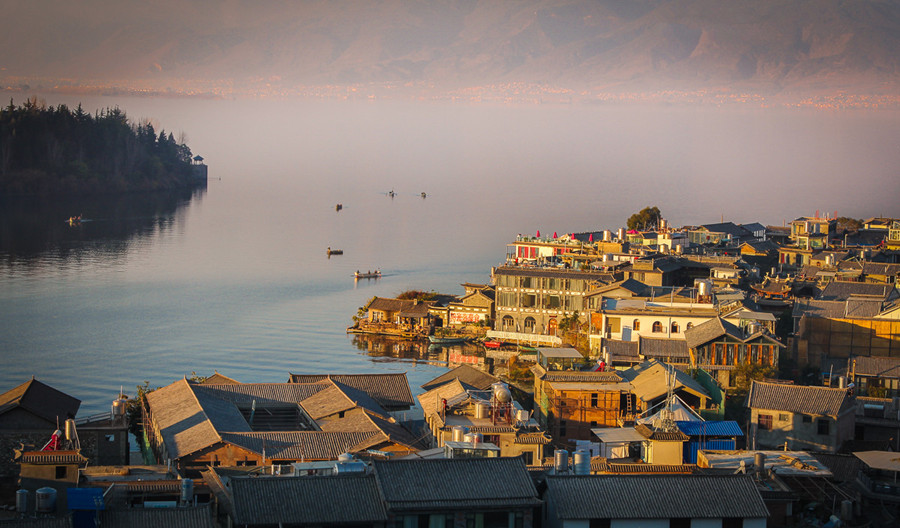
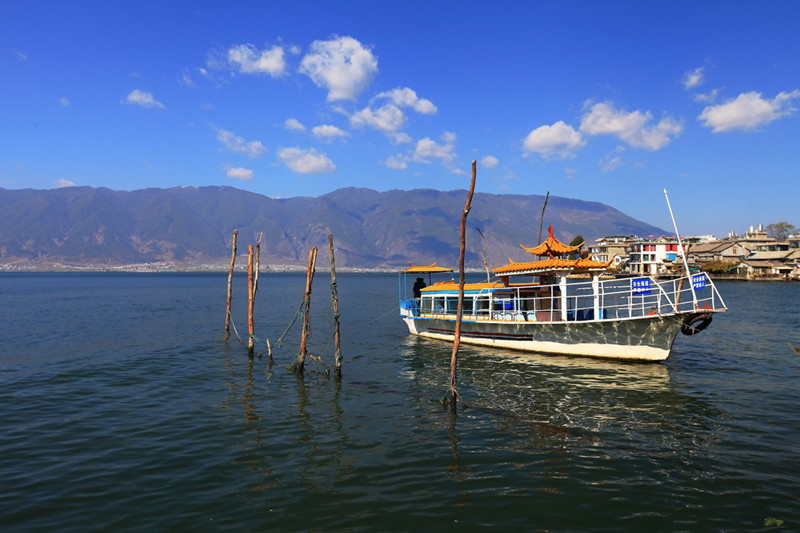
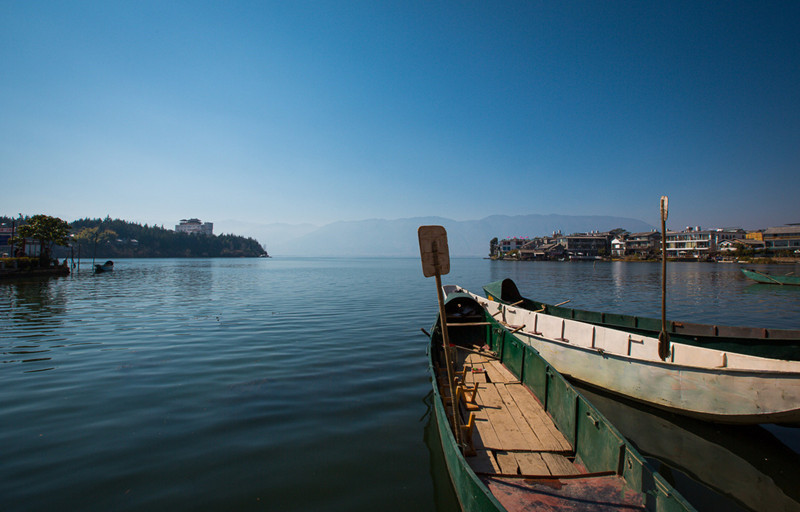
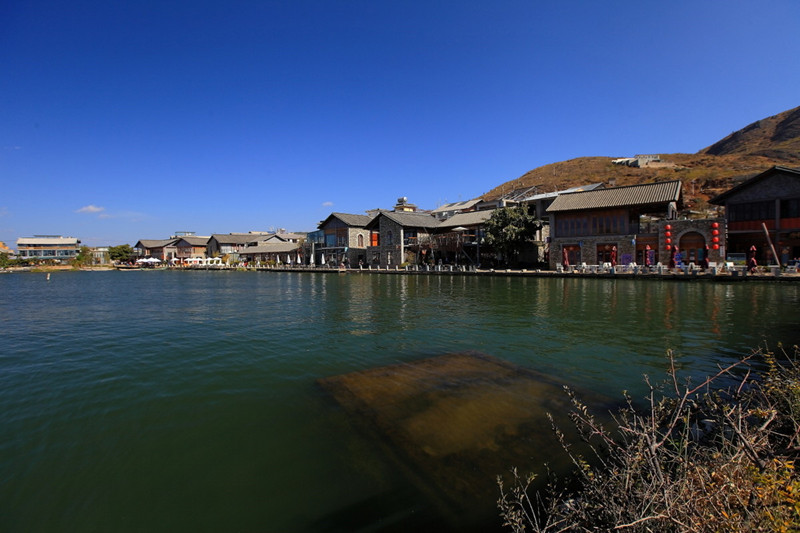
Majiuyi Village (马久邑村, Mǎjiùyì Cūn) is a Bai ethnic village located on the western shore of Erhai Lake (洱海, Èrhǎi) in Dali City (大理市, Dàlǐ Shì), Yunnan Province (云南省, Yúnnán Shěng). With the ongoing development of tourism in Dali, many investors have recognized the village’s unique mountain and lake views. Since 2013, a row of hotels and inns has sprung up along the shores of Erhai Lake, gradually forming a linear cluster of accommodations. This development has made Majiuyi Village a shining pearl among the villages on the western shore of Erhai Lake, alongside Longkan Village (龙龛村, Lóngkān Cūn), Cai Village (才村, Cái Cūn), Panxi Village (磻溪村, Pánxī Cūn), and Taoyuan Village (桃源村, Táoyuán Cūn).
The area features popular hotels such as Haiqi No. 7 (海栖七号, Hǎiqī Qī Hào), Yunqi (云起, Yúnqǐ), Yunshui Xiaozhu (云水小筑, Yúnshuǐ Xiǎozhù), Haitian Zhi Lian (海天之恋, Hǎitiān Zhī Liàn), Shanshui Qingju (山水清居, Shānshuǐ Qīngjū), and Wushe (无舍, Wúshè) to the south, and Yuntu (云途, Yúntú), Haizhi Yu (海之语, Hǎizhī Yǔ), Yinhua (茵画, Yīnhuà), and Muxi (木西, Mùxī) to the north. These hotels market “sea-view rooms” and have become increasingly popular due to their appearances in films and television series like Heart Releases Road (心发路放).
Majiuyi Village consists of 878 households with a total population of 3,785, including 1,887 males and 1,898 females. The agricultural population stands at 3,785, with a labor force of 1,926. As of the end of 2011, 1,600 villagers participated in rural social pension insurance, while 3,670 were enrolled in rural cooperative medical care. Medical services are primarily provided by the village clinic, which is located 1.5 kilometers from the village committee and 5.5 kilometers from the town hospital.
The Bai language name originally was “Longjiuyi” (龙久邑), meaning “Land of the Dragon.” However, feudal rulers believed that the characters for “dragon” and “phoenix” were reserved for emperors, so they changed it to “Majiuyi.”
Nearby attractions include:
Local specialties include Yunnan’s Tuocha tea (沱茶, Tuóchá), Bai ethnic tie-dye (扎染, Zhārǎn), Dali’s single-clove garlic (独头大蒜, Dútóu Dàsuàn), Dengchuan beef (邓川牛, Dèngchuān Niú), Bai’s Xizhou pancakes (喜洲粑粑, Xǐzhōu Bābā), and Dali marble (大理石, Dàlǐ Shí). Cultural customs of the Bai include Raosānling (绕三灵, Ràosān Lìng), Bai embroidery (刺绣, Cìxiù), tie-dye techniques, the Torch Festival (火把节, Huǒbǎ Jié), and the colorful painting of Bai houses.
Majiuyi Village can be accessed by public transport from Dali Ancient City. Buses and taxis are readily available, making the village easily reachable. The journey takes approximately 30 minutes.
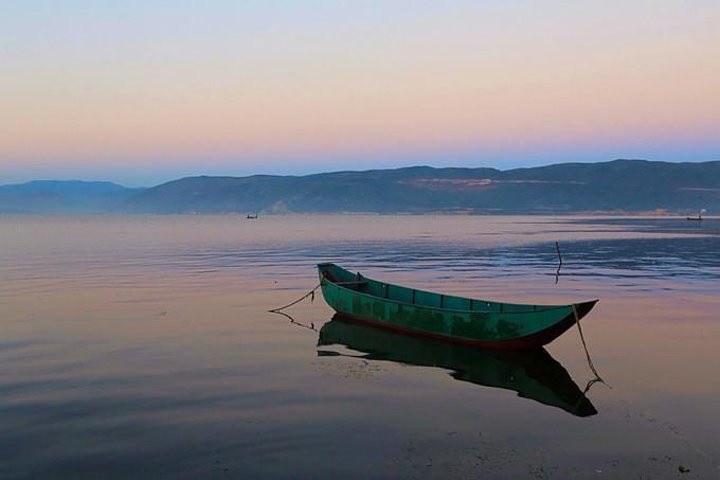
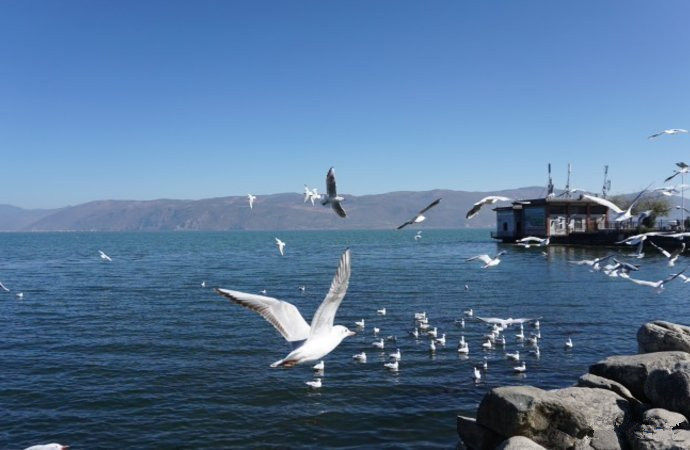
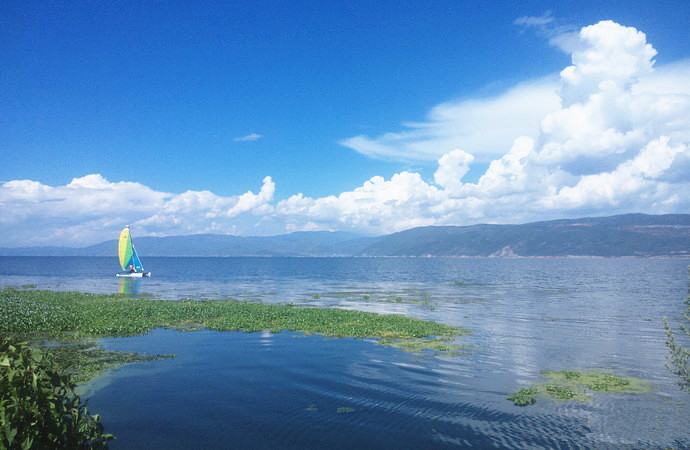
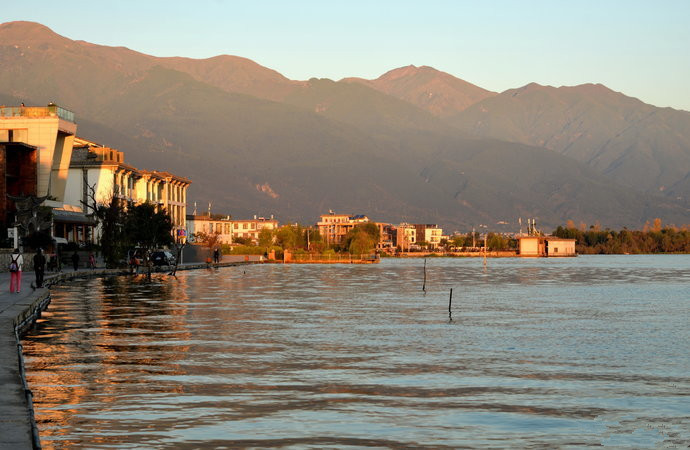
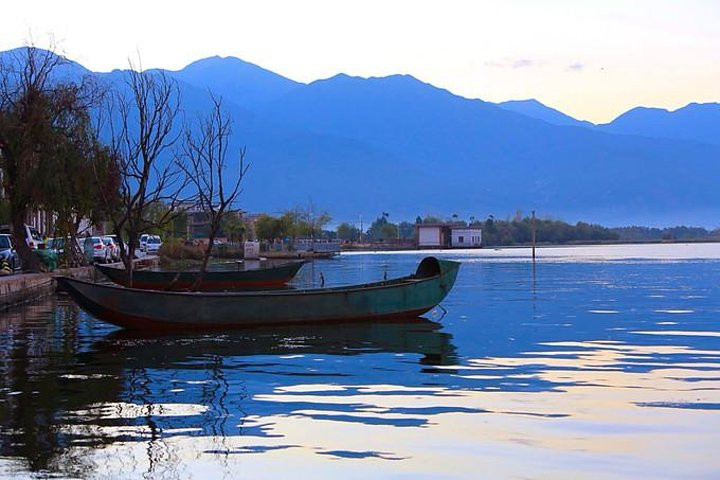
Changle Village (长乐村) is located in Shaxi Town (沙溪镇), Jianchuan County (剑川县), Dali Prefecture (大理州), Yunnan Province (云南省). This village has 271 households and a population of 1,178, predominantly consisting of the Bai (白族), Han (汉族), and Yi (彝族) ethnic groups, who have coexisted harmoniously for generations, creating a traditional agricultural community.
Nestled amidst the mountains, Changle Village is steadily progressing towards a moderately prosperous society under the leadership of the village party committee. In 2003, the village initiated the slogan “One Branch, One Flag; One Party Member, One Path to Wealth” and established the “186” project development strategy. The clear objective aims to cultivate 100 specialized households in dairy cattle, black goats, and beef cattle farming, forming pillar industries. Additionally, the plan includes developing 80 specialized households for economic fruit and rice cultivation, along with 60 individual businesses and labor export households to strengthen the private economy.
Life in Changle Village has improved day by day, reflecting a harmonious development of the “Four Civilizations.” A total of 176 farming households have been recognized as “Ten-Star Civilized Households.” The village party committee has been honored as an advanced party branch by the prefectural committee. Changle Village has received numerous accolades, including advanced party branch, advanced technology working group, and safe village honors from the county committee and government. It has also been designated as a civilized village by the provincial committee and government.
? In Changle Village, there is a unique standalone homestay with only four rooms, each offering a distinct charm. The second-floor rooms provide breathtaking views of the surrounding wheat fields, creating an enchanting scenery. ?️
?️ The interiors of the homestay are clean and tidy, primarily featuring wooden construction that exudes a natural and rustic charm. Although the owner has limited time to spend at the homestay, his warm hospitality makes guests feel at home. ?
?️ Additionally, in Shaxi, there is a delightful restaurant nestled under a persimmon tree, renowned for its delicious home-cooked dishes. The owner is warm and welcoming, and in winter, the persimmon cakes made from the tree’s fruit are a must-try delicacy. ?
? In Changle Village, you can experience the cozy ambiance of the homestay while indulging in authentic rural cuisine. Come and enjoy a unique rural lifestyle here! ?
To reach Changle Village, you can travel from Jianchuan County, which is well-connected by local roads. Public transport options, including buses and taxis, are available for convenience. The village is approximately a 30-minute drive from Jianchuan’s main area.
Renliyi Village, located in Xizhou Town, Dali City, is a picturesque village nestled in the Dali Bai Autonomous Prefecture of Yunnan Province. It lies approximately 5 kilometers north of the Xizhou Town government, accessible via an asphalt road, and is about 37 kilometers from the city center, making it a convenient destination for visitors.
Renliyi Village is bordered to the east by Erhai Lake (洱海) and to the west by Cangshan Mountain (苍山). It is 4 kilometers south of the Xizhou Town government and connects to the Butterfly Spring Scenic Area (蝴蝶泉景区) to the north. National Highway 214 (214国道) and the Dali-Lijiang Highway (大丽公路) run through the village, providing convenient transportation. The village is a Bai ethnic community characterized by a high population density relative to its land area.
The village has a rich history, with architectural resources that reflect its cultural heritage. The traditional Bai-style houses, featuring intricate wooden carvings and unique roof designs, are a testament to the local craftsmanship. Renliyi also embodies the Bai people’s customs, festivals, and lifestyles, making it a significant site for cultural tourism.
Renliyi Village has evolved economically, with resources for traditional agriculture, livestock, fishing, and emerging commercial sectors such as tourism and service industries. The introduction of ecological tourism and cooperation with enterprises has revitalized the local economy, enabling villagers to enhance their livelihoods.
In Dali’s Xizhou Town, Renliyi Village is home to the Flower Language Ranch (花语牧场), covering an area of 358 acres. This scenic site, characterized by its pastoral landscape and harmonious ecological environment, has become a key driver for local rural tourism. It showcases the principles of leisure agriculture and ecological conservation, effectively increasing villagers’ income through agritourism, leisure vacations, and sales of local specialty products.
Li Birong (李必荣), the Party Secretary of Renliyi Village, recalls that traditional agriculture could no longer meet the villagers’ income expectations several years ago. In 2015, the village partnered with Dali Haoshanshui Agricultural Planting Co., Ltd., adopting a “village-enterprise cooperation” model to jointly develop the Flower Language Ranch, injecting new economic vitality into the village.
The ranch includes various functional areas, such as:
Additionally, the ranch offers afternoon tea, flower cake-making workshops, and pottery experiences. These initiatives enrich visitors’ experiences while providing employment opportunities for locals. Villagers actively participate in the ranch’s operations and maintenance, effectively promoting local economic development and enhancing living standards.
Li emphasized that the introduction of enterprises has provided a platform for the village, crucial for attracting more tourists. Since 2016, the Flower Language Ranch has welcomed approximately 300,000 visitors and achieved sales revenue exceeding 7 million yuan. With the ranch’s full completion, annual visitor numbers are expected to surpass 500,000, with projected sales revenue exceeding 10 million yuan. This further validates the significant potential of the flower economy in promoting rural tourism and increasing villagers’ income.
Whether you live in Dali or are visiting, how can you resist admiring the vast flower sea under the blue sky and white clouds, next to Cangshan and Erhai? Every photo taken here feels like a cinematic masterpiece.
In Renliyi Village, the Flower Language Ranch spans over 300 acres and features more than 60 varieties of flowers, attracting numerous visitors. Various flowers bloom vibrantly; upon entering the ranch, you’ll first see beautiful Dahlias (大丽花), followed by Zinnias (百日草), Sage (鼠尾草), and Verbena (柳叶马鞭草). These flowers are in full bloom, adding to the visual splendor.
The ranch cultivates a diverse range of flowers, including:
These flowers bloom in different seasons, ensuring that the ranch is always vibrant and colorful.
In addition to the flowers, the ranch features numerous facilities for photo opportunities, including popular characters like Minions (小黄人), Doreamon (叮当猫), Snow White (白雪公主), and the Seven Dwarfs (七个小矮人), which are particularly loved by children. There is even a large yellow duck and playground equipment, with sunshades set up on the expansive grass for visitors to relax.
The Flower Language Ranch also includes areas for visitors to interact with animals, fruit-picking zones, a poppy garden (虞美人花园), a lily garden (百合花园), a tulip garden (郁金香花园), a lavender garden (薰衣草花园), a fishing pond, and a sandy beach at Moon Lake (月亮湖). The ranch boasts blooming flowers year-round, with different species blossoming in various seasons.
The ranch offers stunning aerial views, showcasing the colorful flower fields against the backdrop of the blue sky, creating picturesque scenes perfect for photography.
The Flower Language Ranch is not just a floral paradise; it also serves as a filming location for the television drama “National Action” (国家行动), attracting fans and tourists alike. It provides a unique blend of nature, culture, and entertainment, making it a popular destination.
Renliyi Village (仁里邑村), Xizhou Town (喜洲镇), Dali City (大理市), Yunnan Province (云南省), is located opposite the Renliyi Primary School (仁里邑完小) along Provincial Road 221 (221省道).
Tips: For self-driving visitors, you can reach the Flower Language Ranch by inputting its name into navigation apps.
Renliyi Village and the Flower Language Ranch represent the beauty of Yunnan’s natural landscape while showcasing the cultural richness of the Bai ethnic group. It is a perfect destination for those seeking a blend of scenic beauty, cultural experiences, and recreational activities.
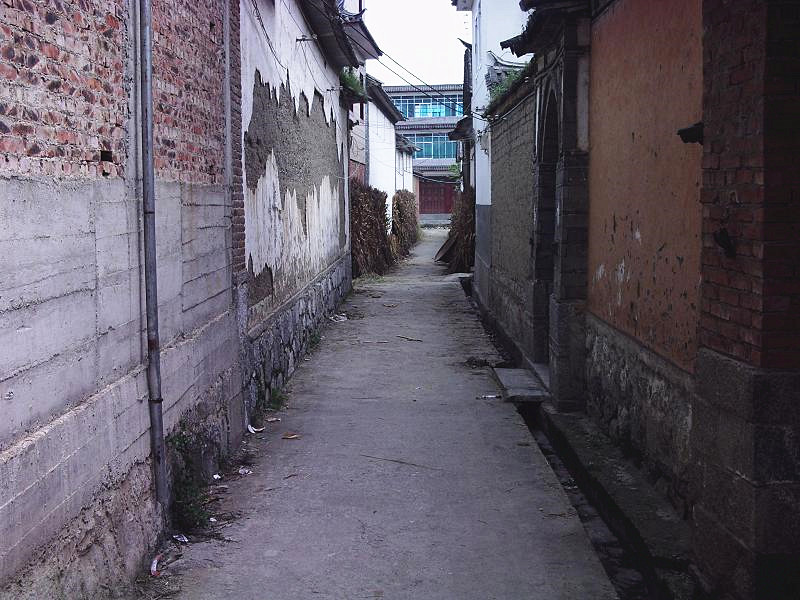
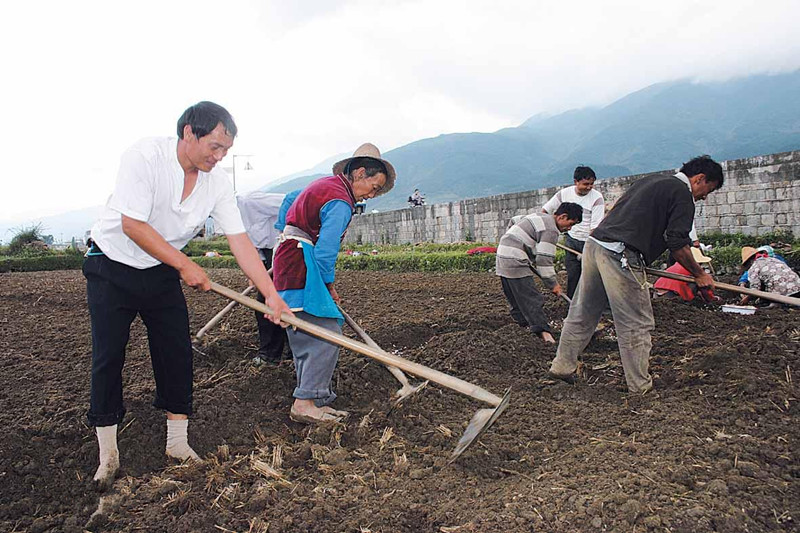
Plan your Xishuangbanna Ethnic Villages Tour to Xishuangbanna? Visit Mandiu Village in Jinghong City, Xishuangbanna which is one of the most fascinating ethnic villages in Xishuangbanna. Explore the local folk ethnic culture including History, Food and Dining, Clothing, Customs and Traditions, Architecture, Festivals, Crafts, Religion, Language of local ethnic people in Mandiu Village in Jinghong City, Xishuangbanna.
Chinese Name:景洪市嘎洒镇曼掌宰村曼丢村寨
English Name: Mandiu Village in Jinghong City, XishuangBanna
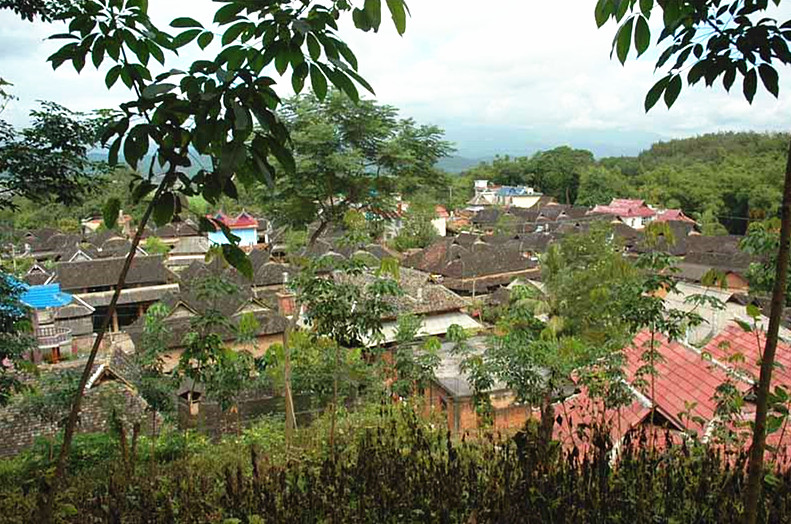
Location:
Manjinghan Village (曼景罕村) is located in the southern part of Gasa Town (嘎洒镇), Jinghong City (景洪市), Xishuangbanna (西双版纳) in Yunnan Province (云南省). It is situated 2 kilometers from the town government center, with convenient access via gravel roads. The village is bordered by Manzhangzai Village Committee (曼掌宰村委会) to the east, Manmian Village Committee (曼勉村委会) to the south, and Mandai Village Committee (曼达村委会) to the west and north. The village administers eight sub-villages, including Manjinghan and Mangga. The elevation of the village is 580 meters, with an average annual temperature of 22.6°C and an annual rainfall of 1200 millimeters, making it suitable for growing rice and rubber among other crops. On December 31, 2019, it was designated as one of the third batch of “Chinese Ethnic Minority Characteristic Villages” by the National Ethnic Affairs Commission.
Manjinghan Village administers eight villages, with an elevation of 580 meters. It enjoys a mild climate suitable for agriculture, particularly for rice and rubber cultivation.
The main industries in Manjinghan Village are rice and rubber production, primarily sold within the county. In 2012, the total revenue from these primary industries reached 8.382 million yuan. The village is currently developing its rubber industry and aims to expand both the rice and rubber sectors significantly.
To reach Manjinghan Village, you can drive from Jinghong City, which is approximately a 15-minute journey. Alternatively, take a taxi or local transportation to Gasa Town, and then follow the gravel road south to the village.
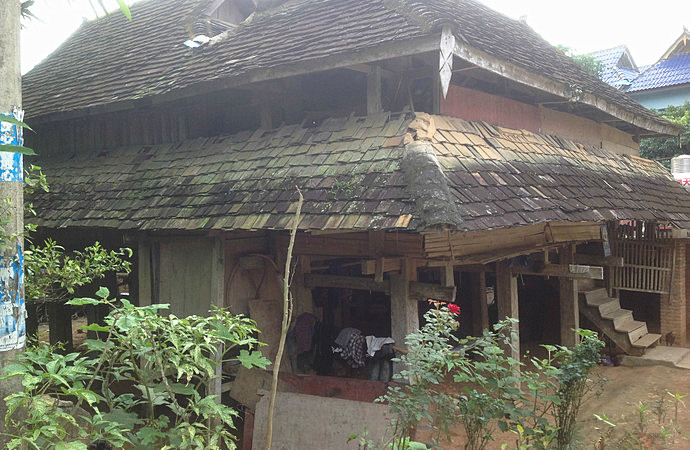
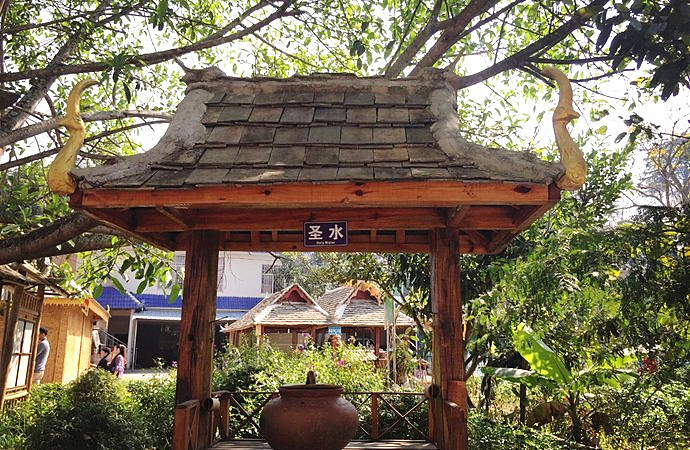
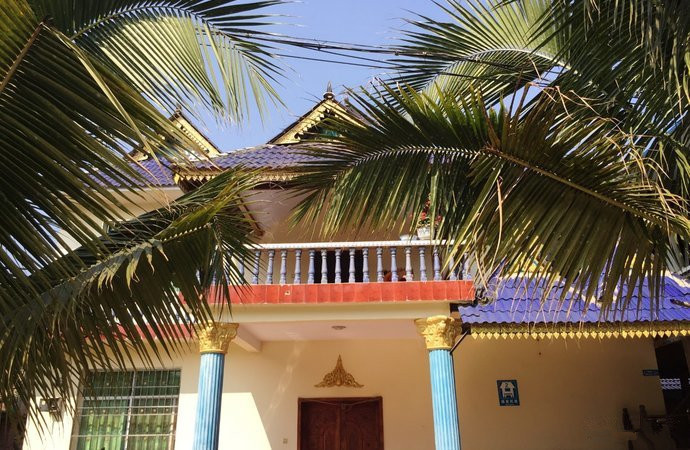
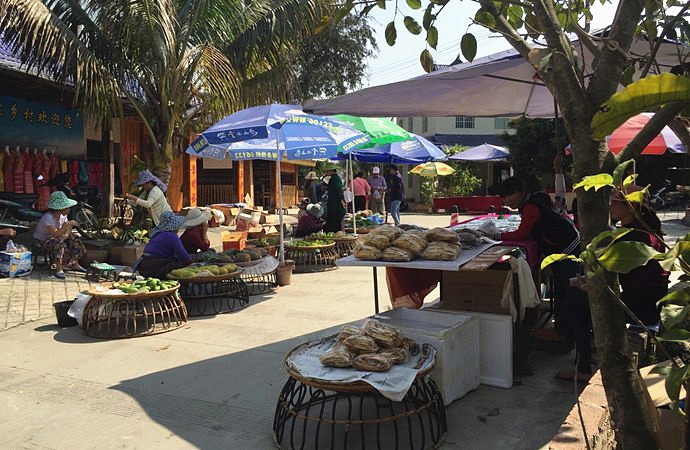
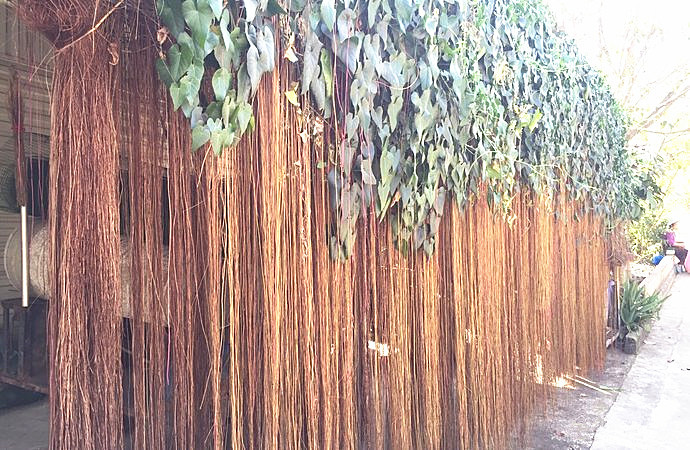
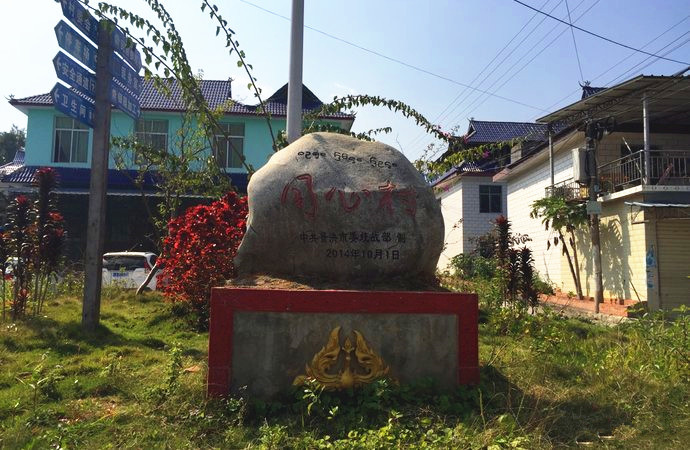
Banpo Laozhai Village (半坡老寨) is located on Nannuo Mountain (南糯山) in Menghai County (勐海县), Xishuangbanna (西双版纳). This village is renowned for its diverse climate, with the phrase “one mountain, four seasons; ten miles, different skies” often associated with the area. It is part of the “ancient tea village” known for producing some of the finest Pu’er tea.
According to legend, during Zhuge Liang’s (诸葛亮) southern expedition, his soldiers fell ill due to the local climate. To remedy this, Zhuge Liang planted a tea tree with his staff, and the soldiers brewed its leaves to recover. Hence, Nannuo Mountain is sometimes referred to as Kongming Mountain (孔明山). Although there is no historical evidence that Zhuge Liang reached Yunnan (云南), the area’s tea cultivation history is indeed long-standing.
Banpo Laozhai is situated at an altitude of 1,650 meters on Nannuo Mountain. It is famous for its pristine scenery and sprawling ancient tea gardens, making it the largest ancient tea region in Xishuangbanna and even Yunnan Province (云南省).
The village is characterized by towering ancient trees, dense forests, and clear streams, showcasing a rich diversity of tropical rainforest wonders. It resembles a natural primitive forest park, with fertile soil and a deep humus layer, contributing to the excellent quality of the tea produced here.
The tea from Banpo Laozhai is known for its robust and tightly rolled dry leaves, with elongated buds that display a mix of dark green hues. When brewed, the tea produces a clear, bright yellow liquid with a high floral fragrance, a full-bodied texture, and a smooth, refreshing aftertaste that lingers on the palate.
The experience of drinking this tea evokes a sense of tranquility, as if it originates from the distant horse caravans of old, akin to the delicate flavor of a wild orchid. The taste is subtle and requires patience to appreciate fully, as the fragrance is often hidden within, much like the unassuming wild orchid.
Each hill has its own distinct characteristics, leading to variations in tea flavor profiles, processing methods, and overall taste experiences. Therefore, when sampling Pu’er tea named after various hills, drinkers will find unique sensations. The flavor of the tea is representative of its specific origin.
Some of the well-known hills include:
Although many may have only tried tea from one of these hills, true tea enthusiasts who traverse mountains and rivers in search of their favorite flavor are rare.
Now, you no longer need to search extensively for different hills. The three main production areas of Pu’er tea offer everything you need. We provide a one-stop solution for your tea needs, featuring ancient tree spring tea from 36 hills, naturally sun-dried over 136 days.
Banpo Laozhai is located halfway up Nannuo Mountain, within the Nannuo Village Committee (南糯村委会) of Menghai County. The nearest village, Guzhai (姑寨), is over 5 kilometers away. The village has 27 households, totaling over 100 people, all belonging to the Aini ethnic group (爱尼人). Most households have their own tea gardens, with each having at least 10 acres. The scattered homes blend harmoniously with the surrounding tea trees and phoenix tail bamboo (凤尾竹), creating a serene environment.
Banpo Laozhai, perched on a hillside, boasts well-preserved ancient trees and rich biodiversity, resembling a primeval forest park. Hidden among the dense foliage are countless ancient tea trees, with their gnarled roots revealing an ancient tea essence. The ancient trees in Nannuo Mountain are significantly thicker than those in Jingmai Mountain (景迈山), even though both hills have similar tree ages. The ancient tree resources in Nannuo Mountain are abundant, particularly in Banpo Laozhai, where outside interference is minimal.
Many people overlook the large tree teas from Nannuo Mountain, believing they can’t produce quality tea. However, the ancient trees here are about 300 years old, yielding hundreds of kilograms of dry tea annually. If asked about their unique characteristics, one might describe them as “pure.” They are neither bitter nor astringent, with subtle fragrances that develop over time.
The tea from Nannuo Mountain is known for its high altitude, refined qualities, and good cultivation conditions, making it a sought-after choice every year. Lower-altitude teas, such as those from Yikou (Y口) and Shitou Laozhai (石头老寨), may not reach the same quality.
Banpo Laozhai tea leaves are darker in color, belonging to the large leaf varietal. The rough processing results in a slightly bitter taste initially, but this bitterness is mild. The aftertaste is sweet and refreshing, with a bright, clear, pale green liquid. The tea is fragrant with honey and orchid notes, and the texture is smooth and rich.
The first brews may feel lighter, but from the third infusion onward, the tea presents a fuller, more substantial body with pure tea essence.
The tea leaves from Nannuo Mountain are harvested three times a year: spring tea, rainy season tea (summer), and valley flower tea (autumn). The spring tea is the finest, often featuring “crab claws” (螃蟹脚). These green tea leaves turn brown when dried. The brewed tea presents a yellow-green hue and a unique fragrance when fresh, developing a medicinal aroma with age. Crab claws are slightly cooling and mildly sour, promoting longevity. They can be consumed alone or blended with Pu’er tea to enhance its flavor.
The lifestyle of the people in Banpo Laozhai is peaceful and serene, reminiscent of distant horse caravans. Their lives harmoniously intertwine ancient traditions with modernity, showcasing a beautiful balance between tea, nature, and life.
To reach Banpo Laozhai Village in Nannuo Mountain, you can travel to Menghai County, Xishuangbanna. From there, take a local taxi or hire a private car to drive you to the village. The area is accessible by road, but the journey may require navigating through winding mountain paths.
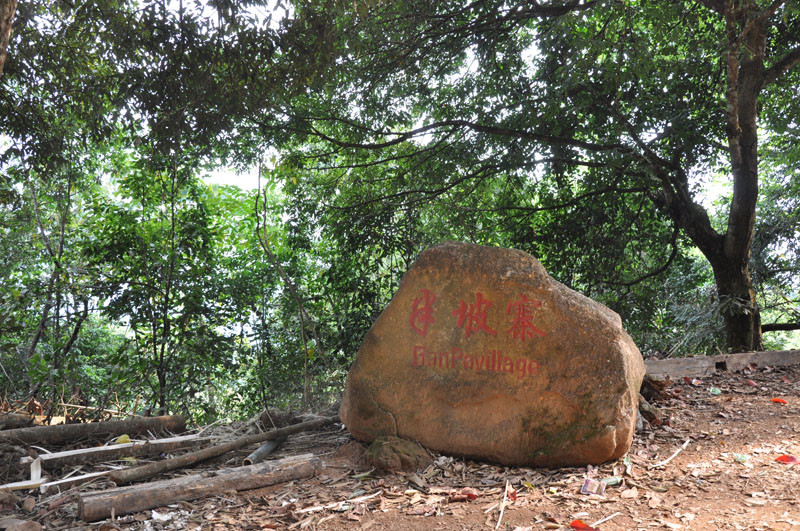
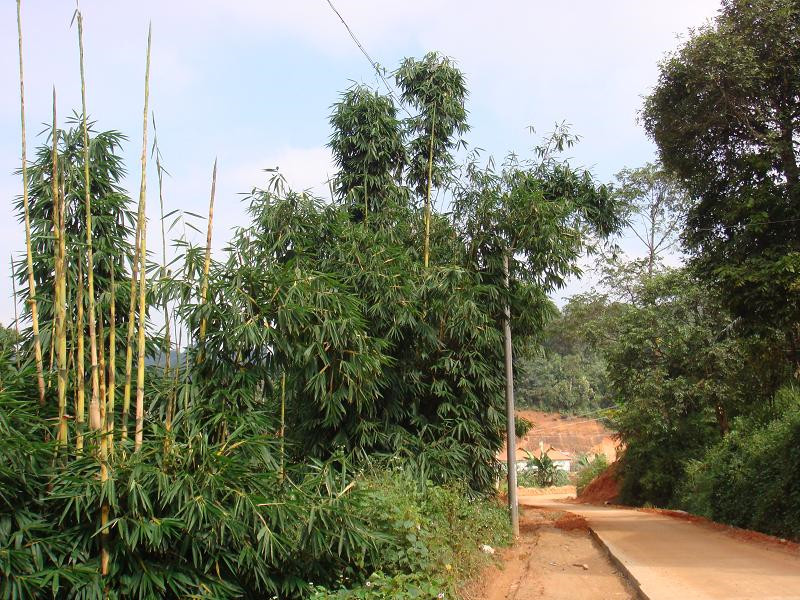
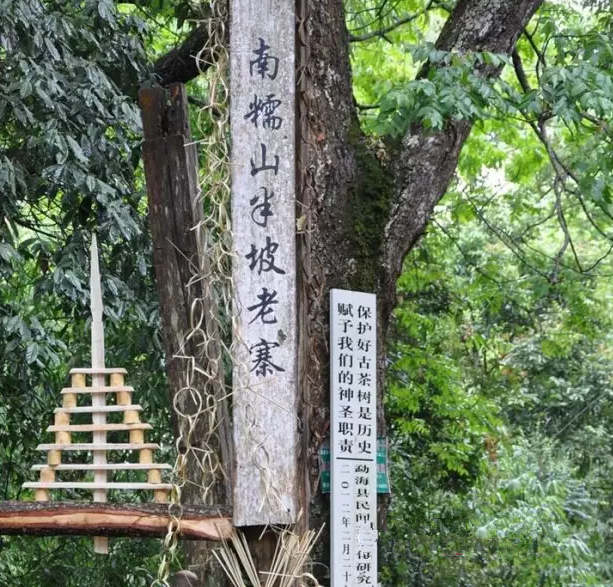
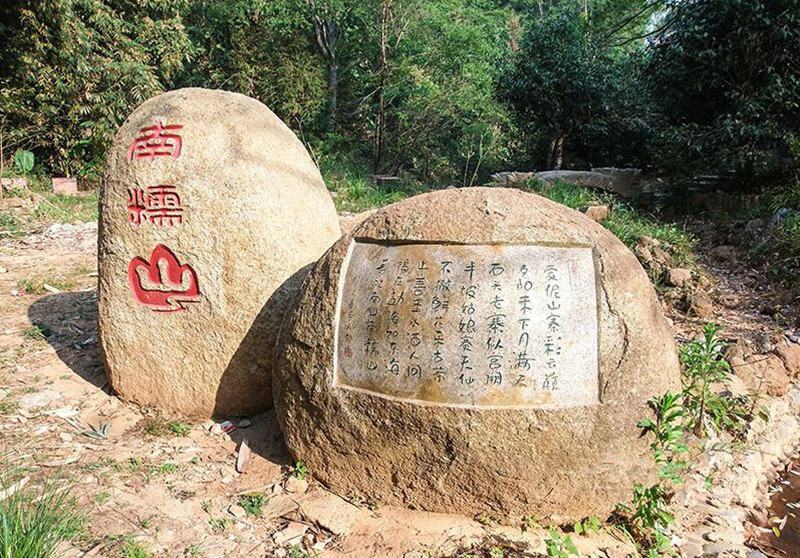
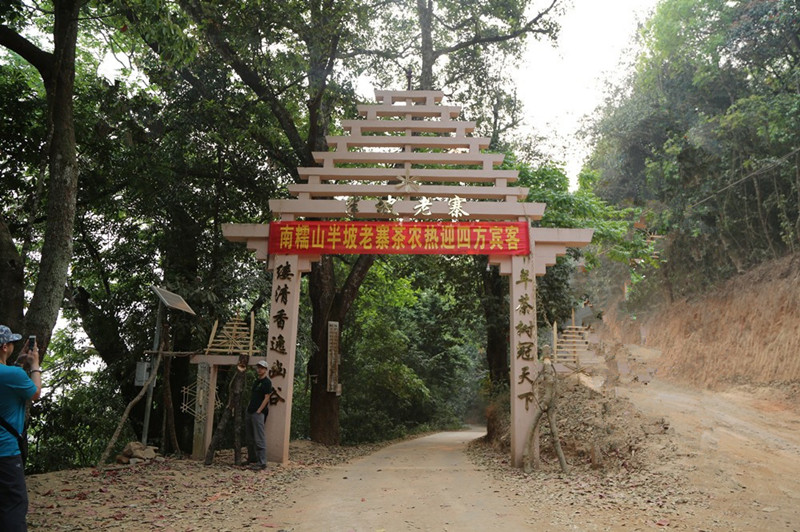
Nuohei Village (糯黑村) is located in Guishan Town (圭山镇), Shilin Yi Autonomous County (石林彝族自治县), Kunming City (昆明市), Yunnan Province (云南省). It lies 4 kilometers west of the town’s government, with a well-paved road providing easy access, only 32 kilometers from the county seat. To the east, it borders Haiyi Village Committee (海邑村委会), to the south is Yizheng Village Committee (宜政村委会), to the west is Yusheng Village Committee (雨胜村委会), and to the north is E Chong Yi Village Committee (额冲衣村委会). The village comprises two groups: Big Nuohei (大糯黑) and Small Nuohei (小糯黑).
If you’re planning your Kunming Ethnic Villages Tour, visiting Nuohei Village is a must. It offers a glimpse into the local folk culture, including history, food, clothing, customs, architecture, festivals, crafts, religion, and language of the Sani ethnic group.
Stepping into Nuohei Village, adjacent to the world-renowned Stone Forest (石林), you’ll encounter an authentic stone realm. The village’s residences and utensils are largely constructed from natural limestone, evident in the roofs, walls, tobacco kilns, stables, grinding mills, gates, and roads. Some of these stone houses are over a century old, captivating explorers with their history.
Nuohei Village is situated in a karst geographical area, where locals utilize nearby natural resources. After extracting limestone, villagers create slabs for paving roads or constructing homes. Historically, the forebears of Nuohei selected flat areas in the rocky mountains for construction, with enough stones unearthed from building foundations to construct entire homes.
The architecture features wooden and stone elements, with most families having a main house (three rooms) and a side house (two wing rooms). Vibrant ancient trees and bamboo groves surround each home.
Nuohei’s artistic appeal has drawn many art students for outdoor painting, making it a haven for creativity.
As Nuohei becomes increasingly recognized, many villagers have opened restaurants, such as Cengshi Villa (层石别墅), Sitongyuan (四通苑), Yulanyuan (雨兰苑), Luosonghang (罗松行), Lijiayuan (李家院), and Family Wang’s Compound (王家院). Here, you can indulge in traditional Sani dishes.
Nuohei Village was established in the 21st year (1816) of the Jiaqing Reign (嘉庆) of the Qing Dynasty (清朝) and served as a pass for horse caravans from Luxi (泸西) to Kunming. During the warlord era in the 1920s, villagers built stone walls and gates to protect against banditry.
Old villagers recall that near the entrance to the Mizhi Holy Forest (密枝神林), there were two steles detailing the village’s history, which were unfortunately destroyed during the Cultural Revolution (文化大革命).
In July 2009, the 16th Congress of the International Union of Anthropological and Ethnological Sciences was held in Kunming, during which approximately 130 experts visited Nuohei Village.
95% of the villagers are members of the Sani ethnic group. Each lunar November, they celebrate the Mizhi Festival, exclusively attended by men. The festival lasts between three to seven days, with dates varying among different branches of the Yi people.
Mizhi Forest, regarded as a “sacred forest,” is a revered place for the Sani people. During the festival, men gather to select a Mizhiweng (密枝翁), who oversees the ceremonies, while women stay indoors.
The ceremony requires a white goat, rooster, and pig, and the Mizhiweng assigns tasks to participants. Following ancient traditions, the Bimo (彝族祭司) leads eligible men to the Mizhi Forest to find the holy Mizhi Tree. They carry the Mizhi God to the priest’s home for a ceremonial cleansing before returning it to the forest the next day.
Throughout the festival, the priest and men tour the village, publicly addressing misbehaviors. The Mizhi God is believed to protect the Sani people, with various folklores surrounding the festival.
Nuohei Village is situated in a karst development area characterized by rocky mountains. The locals traditionally extract stones following the natural patterns to create slabs for construction. The village features closed stone-wood architecture, with vibrant red-painted timber used for beams, doors, and windows. The outer walls are made of stone slabs, while the roofs are tiled with flat and cylindrical tiles.
Most homes have two stories, featuring three main rooms and two wing rooms. The village overlooks the famous Laoguishan (老圭山) and is surrounded by lush green mountains. Nearly every household boasts ancient trees and bamboo groves, creating a picturesque environment.
Nuohei Village maintains a pure Sani culture, with over 600 villagers—only 25 Han and 1 Zhuang, all of whom speak Yi. The Sani people celebrate their traditions, embodying simplicity and warmth.
The village celebrates the Mizhi Festival, a significant occasion for prayer and offerings to ensure prosperity. The villagers gather to perform sacred rituals during the day, and at night, they express their moral values and denounce wrongdoing.
A round stage made of stones is constructed for performances during festivals, where traditional Sani dances, especially the lively Sanxian Dance (大三弦舞), take place, fostering a spirit of community and celebration.
Nuohei Village dates back to 1816, originally serving as a horse caravan stop. To safeguard the village during conflicts, locals constructed defensive walls and watchtowers. Historical records engraved in Yi and Han scripts were once present at the village’s entrance but were lost during the Cultural Revolution.
Walking through Nuohei, you can feel the remnants of history, as the stone houses tell tales of the past through the stories shared by the elders.
To reach Nuohei Village, take a minibus from Kunming Juhua Village Bus Station to Shilin County (10 RMB), and then transfer to a microbus near the Ashima Movie Theater in the county (5 RMB).
With its rich cultural heritage and stunning landscapes, Nuohei Village is a delightful destination for anyone exploring the ethnic diversity of Yunnan Province.
Plan your Baoshan Ethnic Villages Tour to Baoshan? Visit Mangnuo Village in Changning County, Baoshan which is one of the most fascinating ethnic villages in Baoshan. Explore the local folk ethnic culture including History, Food and Dining, Clothing, Customs and Traditions, Architecture, Festivals, Crafts, Religion, Language of local ethnic people in Mangnuo Village in Changning County, Baoshan.
Chinese Name:昌宁县勐统坝芒糯寨
English Name: Mangnuo Village in Changning County, Baoshan
Chinese Name: 保山市腾冲市固东镇江东社区银杏村
English Name: Yinxing Village of Gudong Town in Tengchong City, Baoshan
Ginkgo Village in Tengchong City is located in the Jiangdong Community of Gudi Town, Tengchong City, in western Yunnan Province, and is home to over 30,000 Ginkgo trees. It is about 35 kilometers from Tengchong City Center and has an annual production of over 10,000 jin (approximately 5,000 kg) of Ginkgo nuts. The village features a contiguous Ginkgo forest of over 10,000 acres, with more than 3,000 ancient Ginkgo trees, and 1,000 acres of young forest, approximately 33,000 trees in total. Among these, there are over ten trees aged 1,000 years or more, over 400 trees aged 500 years or more, over 740 trees aged 400 years or more, over 1,000 trees aged 200 to 300 years, more than 1,800 trees aged 30 years or more, and 4,200 trees aged 20 years or more. The village produces over 550,000 jin (approximately 275,000 kg) of dried Ginkgo nuts annually.
Ginkgo Village is located in Jiangdong Village, Gudi Town, in the northern part of Tengchong City, Baoshan, Yunnan. It is adjacent to the famous Tengchong National Volcano Geopark and the Columnar Joints scenic area. It is 21 kilometers north of Tengchong City, about a 25-minute drive away, 48 kilometers from Tengchong Airport, approximately 90 kilometers from Myanmar, and 179 kilometers from Mangshi. Named for its ancient Ginkgo forest, Ginkgo Village covers an area of 35.42 square kilometers and borders Myanmar, lying next to the National Volcano Geopark. It is the first comprehensive tourism demonstration area.
The area has a tropical monsoon climate with warm temperatures. The summer and autumn seasons experience a mix of sunshine and rain, while winters are cool with an average temperature of 15°C. The summer temperature averages 25°C, making it suitable for vacations. The area has over 38,000 negative oxygen ions.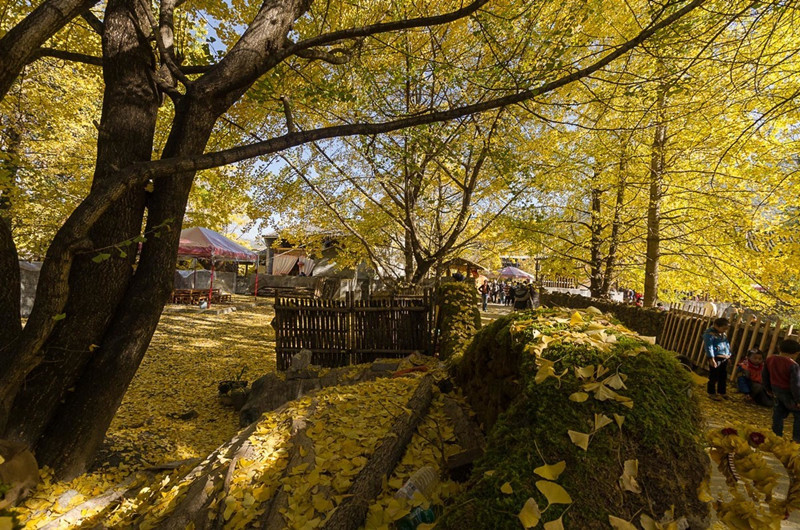
In the early Yuan Dynasty, Tengchong established its government, and Gudi Town was once known as Shunjiang Prefecture, historically called “Shunjiang Guzhou.” Ginkgo Village is home to three main surnames: Chen, Huang, and Yang, distributed across four villages. Tengchong is described as “a scattered volume of Han history,” and Ginkgo Village is one of the most fascinating chapters of the Southern Silk Road. Historical records show that during the Hongwu period of the Ming Dynasty, soldiers from the Central Plains settled here to guard the country, blending Central Plains traditions with local frontier features to create a unique cultural landscape in western Yunnan. Every late autumn and early winter, the entire village turns golden. The village is also a major filming location for the movie “The Warlords,” directed by Chen Kaige.
In addition to its ancient Ginkgo forest, Ginkgo Village features the karst landscape of Jiangdong Mountain, the bustling Tiangong Market, the Ginkgo Story Museum showcasing the village’s history and culture, and the ancient Shimen Old Trail. It integrates ecological wonders such as “mountains, waters, forests, caves, and gorges” with historical and cultural relics.

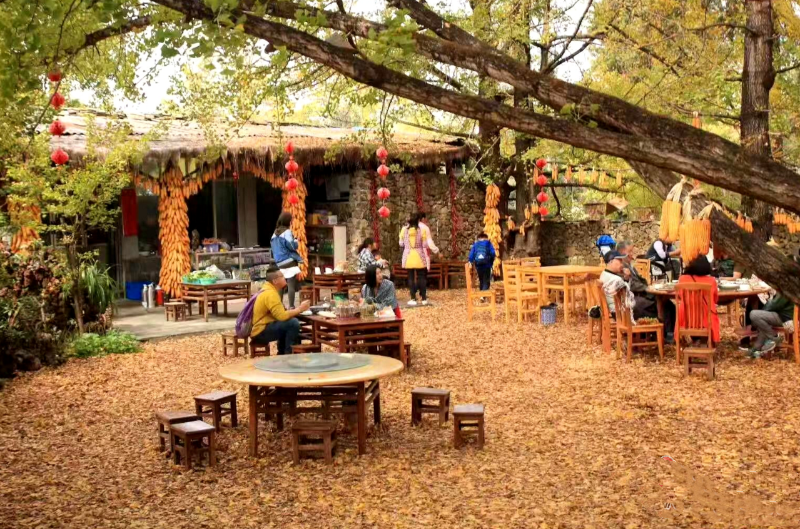
Stir-fried Ginkgo nuts, Jade Stewed Phoenix, Ginkgo Stewed Pork Intestines, Ginkgo Soup, Horse Meat, Clay Pot Dish, Great Rescue, and Dragon Crossing the Sea Soup.
Transportation
From Tengchong to Ginkgo Village is approximately 40 kilometers. You can take a bus to Gudi Town and transfer to a local vehicle. Alternatively, you can visit the Volcano Park first and then take a minivan. If possible, charter a vehicle from the western gate bus station in the county town.
Parking: The parking lot is located in Xingyang, Gudi Town, Tengchong City, Baoshan, Yunnan Province, 1.8 kilometers from the scenic area, situated in the western part of the park.
Plan your Baoshan Ethnic Villages Tour to Baoshan? Visit Tiejiangzhai Village in Changning County, Baoshan which is one of the most fascinating ethnic villages in Baoshan. Explore the local folk ethnic culture including History, Food and Dining, Clothing, Customs and Traditions, Architecture, Festivals, Crafts, Religion, Language of local ethnic people in Tiejiangzhai Village in Changning County, Baoshan.
Chinese Name:昌宁县铁匠寨
English Name: Tiejiangzhai Village in Changning County, Baoshan
The Take Cliff Paintings are located at the southern foot of Zhaying Peak, northeast of Take Village (它克村), Qinglongchang Town (青龙厂镇), Yuanjiang County (元江县), Yuxi City (玉溪市), Yunnan Province. The site is approximately 50 kilometers from Yuanjiang county seat.
Discovered in 1985, these ochre-red cliff paintings date back approximately 3,000 years to the late primitive society period. The 19.5-meter-long and 3-meter-high artwork features 92 distinct images depicting ancient human worship of the sun, stars, celestial bodies, nature, and maternal ancestors.
About 200 meters above the paintings lies Yinbin Cave (阴宾洞), a spacious, dry, and well-ventilated limestone cave believed to have been inhabited by the painters. In December 1987, the site was designated as a Provincial Key Cultural Relics Protection Unit (云南省重点文物保护单位) by Yunnan Province.
Yuanjiang County (元江县) is home to diverse ethnic groups including Hani (哈尼族), Yi (彝族), and Dai (傣族) peoples, who maintain rich traditional customs and seasonal rituals for agricultural blessings.
The county’s low-latitude plateau monsoon climate creates significant variations between mountainous and basin areas. Spring and autumn offer the most comfortable temperatures and optimal viewing conditions.
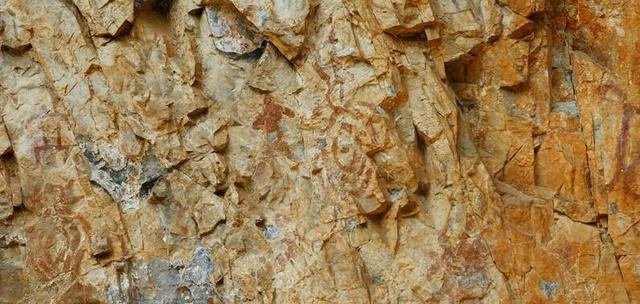
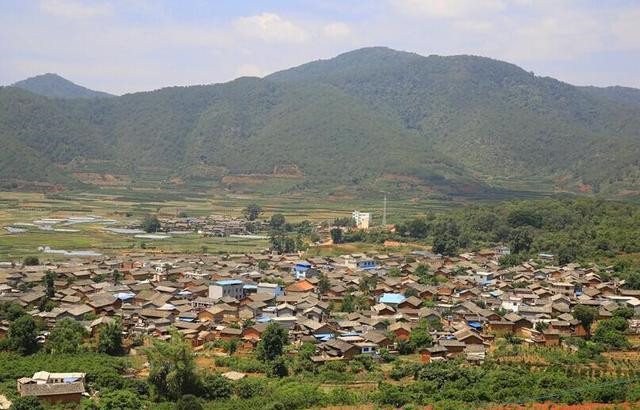
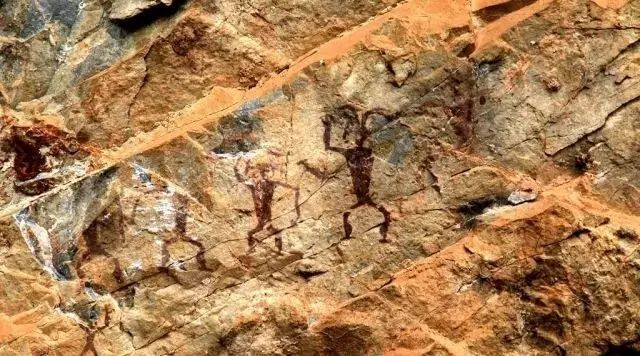
Free entry.
Sample local specialties like wild mushrooms and ethnic minority cuisine.
Browse ethnic handicrafts including Yi embroidery (彝族刺绣) and silver ornaments.
The Take Cliff Paintings offer a rare window into humanity’s earliest artistic expressions. May your visit to Yuanjiang (元江) deepen your appreciation for Yunnan’s ancient cultural heritage!
For Chinese version please go to:
http://ylxf.yn.gov.cn/Html/News/2014/5/12/31646.html








Ancient Villages in Yunnan
Overview Daoyipang Fishing Village (岛依旁村) is part of the Dajianpang Administrative Village (大建旁行政村) in Shuanglang Town (双廊镇), Dali City (大理市), Yunnan Province (云南省). Located in the basin area, it...
Overview Majiuyi Village (马久邑村, Mǎjiùyì Cūn) is a Bai ethnic village located on the western shore of Erhai Lake (洱海, Èrhǎi) in Dali City (大理市, Dàlǐ Shì), Yunnan Province...
Overview of Changle Village Changle Village (长乐村) is located in Shaxi Town (沙溪镇), Jianchuan County (剑川县), Dali Prefecture (大理州), Yunnan Province (云南省). This village has 271 households and a...
Renliyi Village, located in Xizhou Town, Dali City, is a picturesque village nestled in the Dali Bai Autonomous Prefecture of Yunnan Province. It lies approximately 5 kilometers north of...
Plan your Xishuangbanna Ethnic Villages Tour to Xishuangbanna? Visit Mandiu Village in Jinghong City, Xishuangbanna which is one of the most fascinating ethnic villages in Xishuangbanna. Explore the local...
Overview Manjinghan Village (曼景罕村) is located in the southern part of Gasa Town (嘎洒镇), Jinghong City (景洪市), Xishuangbanna (西双版纳) in Yunnan Province (云南省). It is situated 2 kilometers from...
Overview Banpo Laozhai Village (半坡老寨) is located on Nannuo Mountain (南糯山) in Menghai County (勐海县), Xishuangbanna (西双版纳). This village is renowned for its diverse climate, with the phrase “one...
Location and Accessibility Nuohei Village (糯黑村) is located in Guishan Town (圭山镇), Shilin Yi Autonomous County (石林彝族自治县), Kunming City (昆明市), Yunnan Province (云南省). It lies 4 kilometers west of...
Plan your Baoshan Ethnic Villages Tour to Baoshan? Visit Mangnuo Village in Changning County, Baoshan which is one of the most fascinating ethnic villages in Baoshan. Explore the local...
Chinese Name: 保山市腾冲市固东镇江东社区银杏村 English Name: Yinxing Village of Gudong Town in Tengchong City, Baoshan Ginkgo Village in Tengchong City is located in the Jiangdong Community of Gudi Town, Tengchong...
Plan your Baoshan Ethnic Villages Tour to Baoshan? Visit Tiejiangzhai Village in Changning County, Baoshan which is one of the most fascinating ethnic villages in Baoshan. Explore the local...
Location The Take Cliff Paintings are located at the southern foot of Zhaying Peak, northeast of Take Village (它克村), Qinglongchang Town (青龙厂镇), Yuanjiang County (元江县), Yuxi City (玉溪市), Yunnan...
Don't assume you're restricted to the main hubs of Beijing and Shanghai, our tours can start from any city.
For your safety, please register with the Embassy.
Exchange some local currency for your trip
Start planning your tailor-made holiday to China by contacting one of our specialists. Once enquired, you’ll get a response within 0.5~23.5 hours.

Address: Building 4, Yifuyuan, Hehong Road, Xishan District, Kunming, Yunnan, China
Wechat/QQ: 270384698
Office Call: 86-18812220370
Email: Trip@YasoTrip.com
Facebook Page:
https://www.facebook.com/YasoTrip
Tel/WhatsApp: +8618088243690
Trip@YasoTrip.com
Daily: 9:00 am - 6:00 pm
Copyright © 2008 Yaso Trip. All rights reserved
Address: Building 4, Yifuyuan, Hehong Road, Xishan District, Kunming, Yunnan, China
Wechat/QQ: 270384698
Office Call: 86-18812220370
Email: Trip@YasoTrip.com
Facebook Page:
https://www.facebook.com/YasoTrip
Tel/WhatsApp: +8618088243690
Trip@YasoTrip.com
